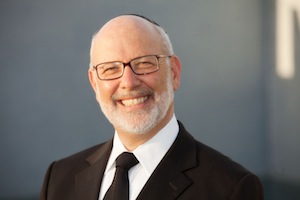When Poskim (Halachik authorities) have a safek (doubt) about the correct interpretation of a law, there are various formulas by which to resolve it. It is unusual that the Poskim decide to accept all possible interpretations requiring us to practice the law in all of its permutations. Yet in determining the required sounds from the shofar, this is precisely what they have done.
The Torah makes reference to Rosh Hashannah as a Yom Teruah.Teruah is clearly the musical sound produced by a wind instrument. Elsewhere when the Torah talks of the sounds to be blown on the Yom Kippur of the Yoveil year, it refers to a Shofar Teruah implying that the instrument to be used to create the Teruah sound is a Shofar. But what are these musical notes called a Teruah? What does a teruah sound like?
Unkelos translates teruah as yevvava, a cry. So now we know the sound to be made by the shofar is a crying sound. This still leaves us in doubt, because there are two distinct sounds of crying: one can sob and one can wail. Since we have no clear indication which of these two sounds the teruah is, the gemarra decided that we should blow all permutations: a) a wail, that we call shevarim; b) a sob, that we call teruah; and c) a combination of both that we call shevarim-teruah. The gemarra also learns that before and after every teruah(in its different forms) there should be a long unbroken sound of thetekiah.
We use all permutations because the cry of Rosh Hashanah is not just one cry, it is a process of crying in all its evolving forms. It starts with a confident and optimistic cry of triumph, the tekiah. Then it moves into the wail of the shevarim, and breaks into the heartfelt sob of the teruah. It ends with the combination shevarim-teruah. Each cry is preceded and followed by the triumphant tekiah. If we hear these sounds in the right order and in the 100 different phrases determined for each day of Rosh Hashannah, we have technically filled the Torah's commandment to listen to the Shofar.
But "hearing" is more than the passive absorption of sound into the brain. The word Shemiah that we use in the beracha for the shofar as well as in the famous first sentence of the shemah, is more than hearing. Shemiah is listening, paying attention. What is it that we should listen to, what emotions can the music of the shofar transmit to us?
A cry more than any other sound, elicits emotion. It is hard to hear the cry of a person; adult, child or infant, and not be moved. But some cries are not made out aloud. Sometimes you need to listen to a person's soul to hear them cry; you need to look into their eyes, see into their hearts, and feel their pain. We often turn away from the cries of others because it is too painful to listen, probe and respond.
We don't only turn away from the sobs of other. Sometimes our own souls sob and cry out, but our heads are too cluttered with noise to hear them. Personally, the sounds of the shofar are pathways to the sounds of my own soul. They cause me to pause, to hear, and to listen intently. Is my soul crying out? Is it sobbing quietly to itself without me paying any attention to it?
As I concentrate my attention on the depths of my own soul, I hear a faint echo of the shofar's sounds deep inside me. I hear the triumphant tone of the Tekiah as my soul sees a cosmic picture of an ideal world of Divine presence, peace and justice. It recognizes my potential contribution to that vision and it shouts out a triumphant affirmation, a bright and clear Tekia. Then it sees the cosmic reality, so different from the cosmic ideal. And my soul begins to wail in harmony with millions of other Jewish souls. It wails over a Jewish world that has become superficial and void of deep meaning. Over the study of Torah that too often lacks majesty and relevance. It wails over the practice of Torah that too often denies the essence ofderacheha darchei noam (the ways of the Torah are ways of wellbeing and pleasantness). It wails for a world where halacha is ritual rather than service, and learning is an academic endeavor rather than emersion into Divine Intelligence. It wails for unrealized potential. It wails for a world so lost, it wails for the injustice it sees. All around it.
Then the wail becomes a self-focused sob. My soul sobs when it sees how much greater I could be than I am, how much more impactful, how much wiser, how much kinder. It sobs for the love I could have shown and haven't for the time I could have used and didn't. It cries for wasted opportunities.
And then, slowly, the sobbing subsides. My soul has noticed that I am hearing it, it realizes that its sobbing has moved me to tears too. The sobbing stops when my soul sees that I feel compelled to make changes in the year ahead and commit to those changes, that I will do what I can to bring the world a little closer to its ideal, and my life a little more dedicated to Avodas and Kiddush Hashem. Once again my soul lets out a triumphant cry: tekiah.
Was that my soul I was listening to, or was it the shofar expertly blown in the shul in which I am davening? I can't really tell. By this time the sounds of my soul's cries and those of the shofar have fused. I feel at one with the shofar, at one with the souls of all the other Jewish people pouring their hearts out in prayer. I feel at one with my G-d.








